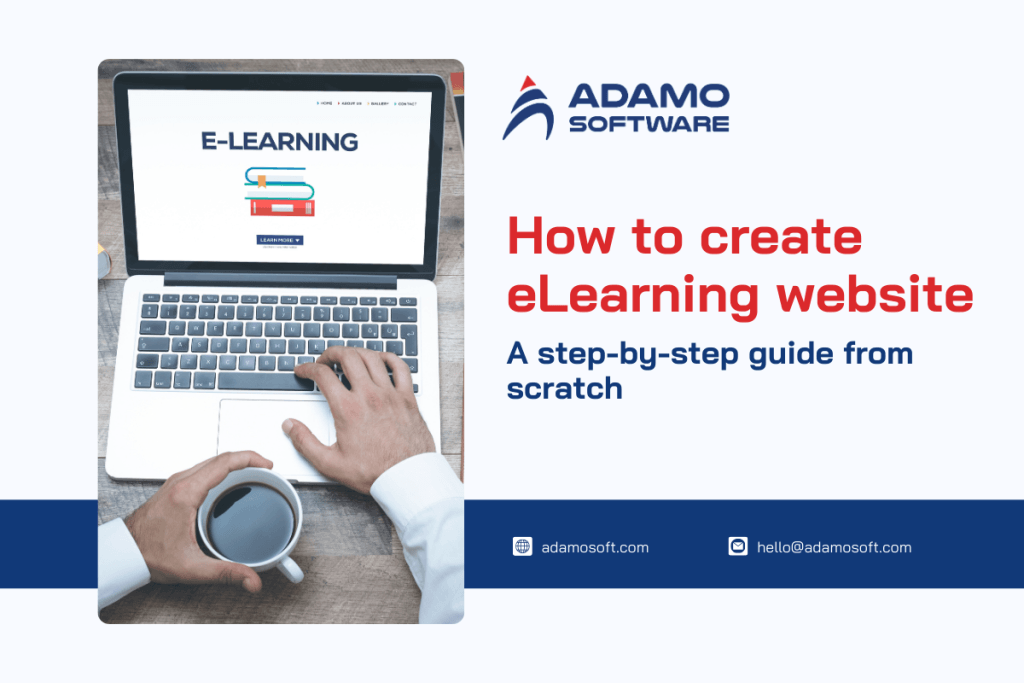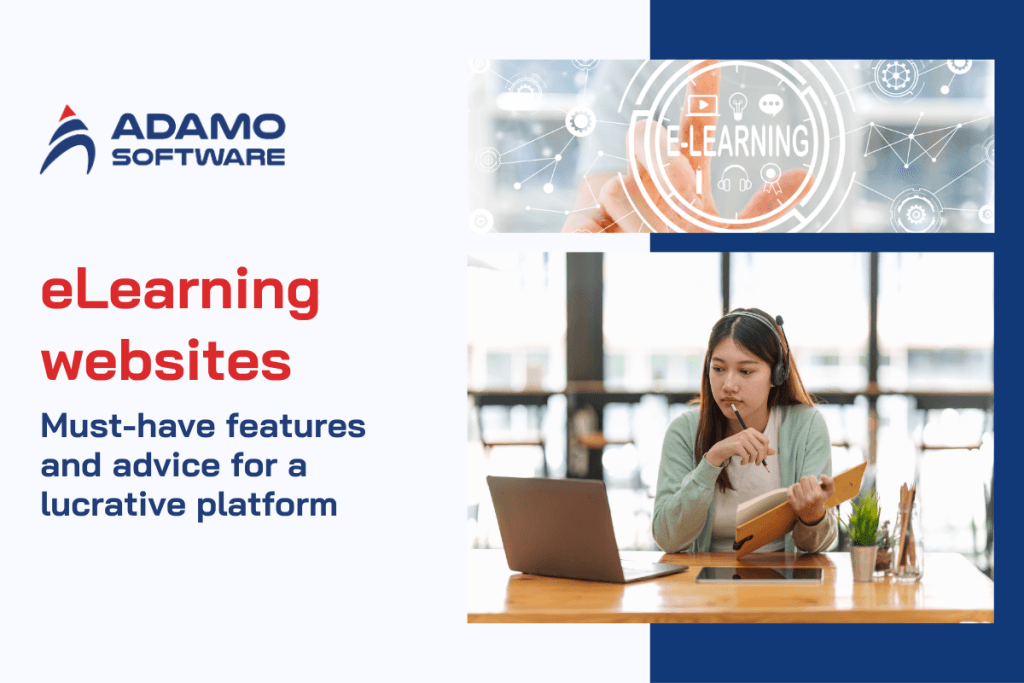Educational App Development: Complete Guide for Android and iOS
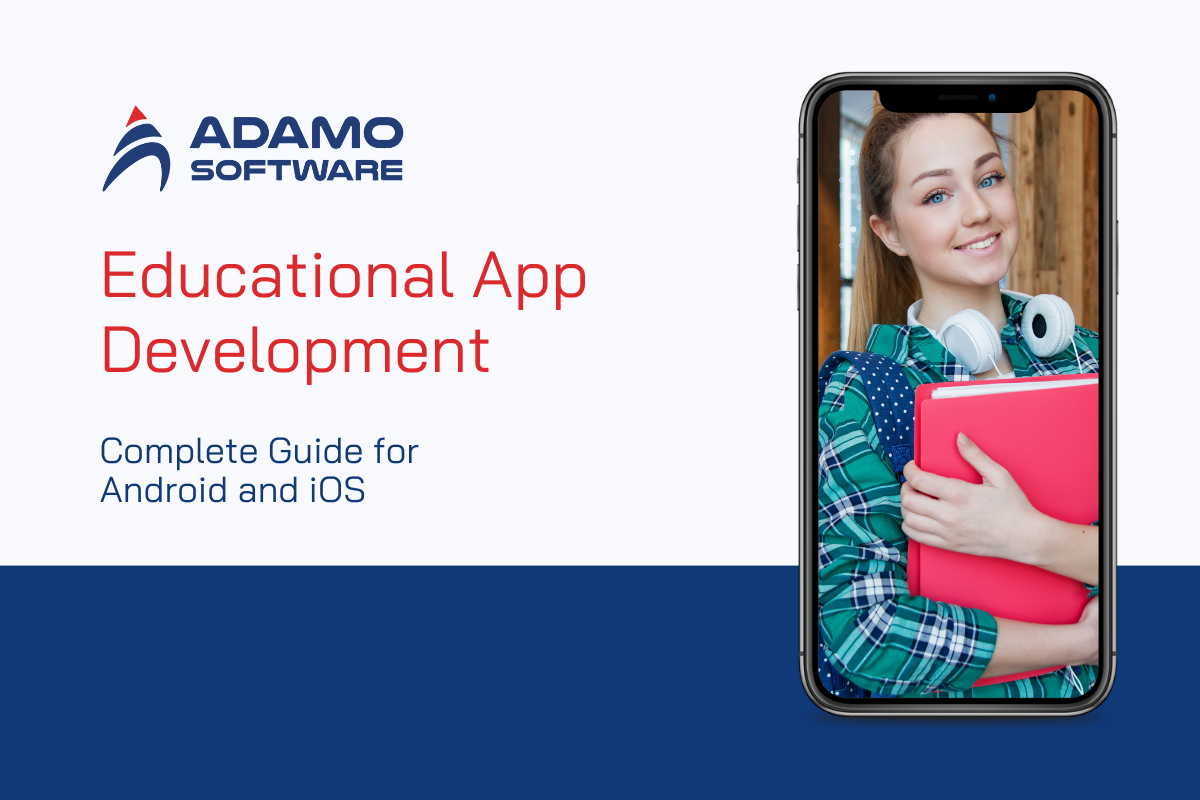
With the strong development of science and technology, the current education system has undergone great changes, becoming more convenient, modern, and scientific. Instead of using books, educational apps are increasingly popular due to their convenience and the quality and performance they bring.
Designing educational and online learning apps is a new trend, bringing many benefits to schools, academic centers, and businesses in this field. Let’s find out detailed information about educational app development with Adamo Software!
This blog post will give you more statistics and insights about the educational app market, different educational app development types, and must-have features of mobile educational apps. Besides, some modern technologies to develop educational apps, the way to create an educational app, and how you can make money from your educational app are also mentioned.
All information contained in the blog post has been carefully researched by Adamo Software, based on the trends in modern technology. So, read on for our post and find yourself some useful information.
I. Educational App Market: Statistics and Insights
Grasping the statistics and insights of the educational app market is extremely essential for your educational app development. This helps you identify key trends and user preferences, choose effective types of educational apps, and integrate modern technologies to enhance user experience. Here are some key statistics and insights.
1. Market size and growth
The educational app market has experienced significant growth in recent years and is forecasted to continue enhancing in the future, due to the advancements in technology and the rise in the need for personalized and flexible learning solutions. Research has shown that the educational app market was valued at US$ 31,251.26 million in 2022 while in 2031, this number is projected to reach US$ 128,684.67 million, with a compound annual growth rate of 26.6%. From this, it can be said that the market will witness an exponential increase in the next few years.
Regarding regional insights, the educational app market is booming in Asia Pacific, North America, and Europe. Especially in the Asia Pacific region, India and China are at the forefront of this trend, thanks to their large student populations and users who are knowledgeable about technology. Over 50% of students in these two countries use apps for learning.
2. Web-based and mobile-based educational app
Both web-based and mobile-based educational apps are widely used by users, thus, you can consider having your educational app development available on mobile, web, or both. While mobile apps allow users to access educational content through smartphones and tablets, web-based educational apps can be accessed through desktop computers and laptops.
With an available mobile app, users can access documents in the data warehouse online or offline to the downloaded documents. The mobile apps often divide the lesson into parts, use flashcards for effective memorization, and integrate game-like elements to keep users motivated. Supposing you want to develop an educational app on mobile phones, you can choose iOS, Android, or both.
If users use web-based apps, they can interact more with teachers and study with a larger screen which is suitable for complex content or activities. Web-based apps are ideal choices for schools and universities which help them connect directly with their students. The thing to note here is that to use these apps, users must have an Internet connection. Online courses and traditional classroom settings can only be accessed when Wi-Fi is readily available.
3. Future trends for educational app development
Learning through apps is becoming more and more popular, so building learning apps has also become a trend for software developers. Here are some future trends for educational app development.
- AI and machine learning
Artificial intelligence technology helps personalize online learning by understanding user behavior, identifying their weaknesses, and offering solutions. AI uses complex data analysis algorithms to enhance education management systems and help students learn.
- Augmented Reality (AR) and Virtual Reality (VR)
AR and VR technology expand educational possibilities, allowing virtual experiments that are inaccessible or difficult to reach in reality. AR and VR help popularize distance learning and introduce innovative ways to understand information, increasing students’ imagination and creativity.
- Gamification
Gamification is one of the simplest ways for you to add fun and excitement to your app. In addition, it is also a great way to increase user engagement. Through the games, users can reach their goals faster.
- Microlearning
Microlearning helps solve the problem of not having enough time to study, because it divides the lesson into small parts, and each part does not take too much of the learner’s time. Learners can take advantage of any free time to study without worrying about the lesson taking up too much of their time.
Overall, the above statistics and insights have highlighted the educational app market’s dynamic and rapidly evolving nature. Thanks to the development of the market, building an educational app has become a great idea for an app to make money. But which types of educational apps should you develop? Let’s keep reading for your answer.
II. Different Types of App Development for Educatio
Educational app development offers a diverse range of app types. Each type of app meets different user needs and preferences. Whether you target young children, students, employed people, or lifelong learners, there is always an educational app for you to create. Let’s explore different types of app development for education with Adamo Software!
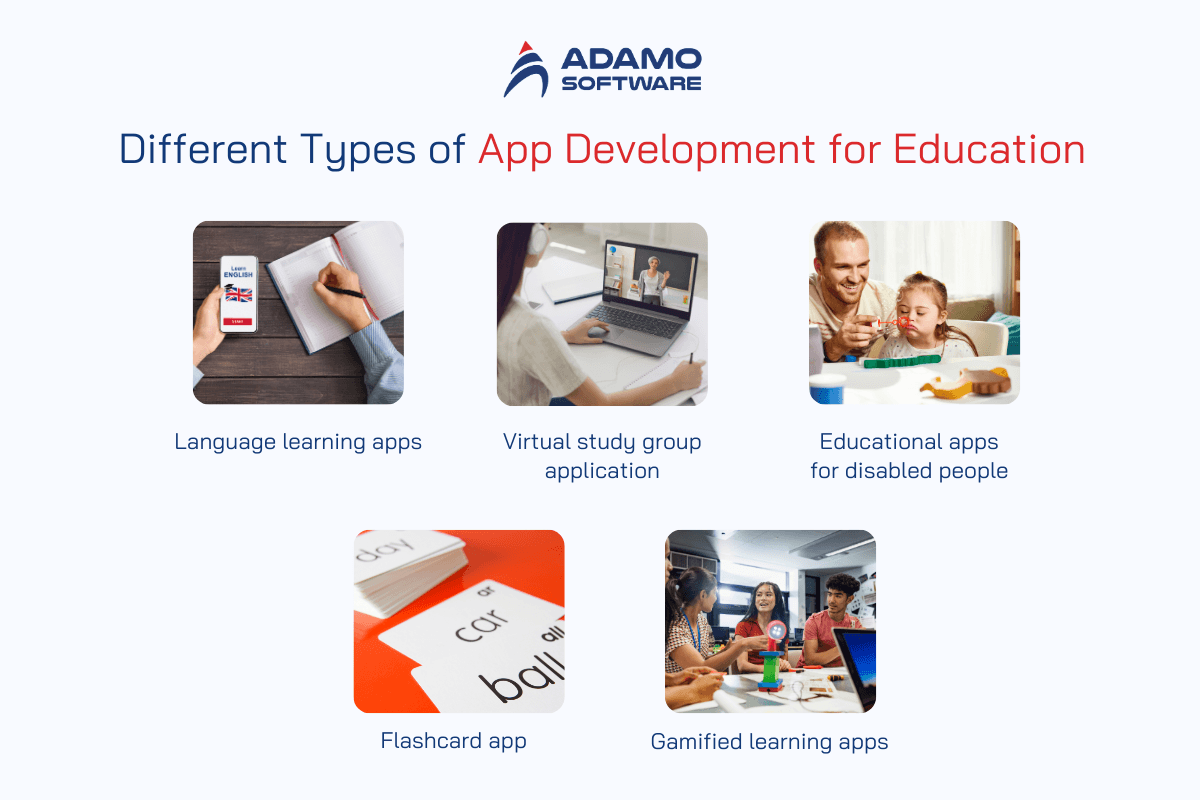
1. Language learning apps
Foreign language learning apps are becoming more and more popular, especially in the context of integration, knowing multiple languages becomes an advantage for each person. These apps can provide short lessons, and topics close to daily life, combining games, challenges, and exchange activities with native speakers, helping users practice listening, speaking, reading, and writing skills. App developers need to incorporate interactive lessons, translation, pronunciation, etc., enhancing user experience and evaluation. Here are some essential elements to make a successful foreign language learning app.
- Updated and practical lecture exercise contents
- Smart and appropriate features
- Simple interface design, friendly and easy to use
- High security
2. Virtual study group application
Virtual study group application is one of the educational app development types that you can refer to. This app is increasingly sought after and used by many schools and educational centers as a convenient solution thanks to its ability to support access to education anytime, anywhere, serving the independent learning process and making classroom management easier. With this app, students can meet in a common forum and review for exams with other students studying the same subject. When designing the virtual study group application, you may want to focus on the features below.
- Video conferencing to facilitate communication between teachers and students
- Digital whiteboards that support real-time interaction/explanation
- Instant messaging
- Allowing students to raise their hands to speak and participate in the lesson
- Exchanging directly one by one with teachers or creating exchange groups for students to collaborate in online small groups
3. Educational apps for disabled people
Educational apps for disabled people are also another kind of educational app development. When designing this type of app, you should pay attention to the interface, and check to see if this interface is suitable for people with disabilities. Besides, it should incorporate features that cater to various disabilities. Below are different features for different disabilities.
- For visually impaired people
For visually impaired people, you can develop an app that incorporates text-to-speech functionality for reading text aloud so that they can follow the sound to do things effectively. Besides, you should design an app that can provide danger warnings to visually impaired users through image processing from artificial intelligence.
- For the hearing-impaired people
If you want to design an app that is aimed at people with hearing impairments, you must provide videos and audio files with subtitles. Besides, let’s include sign language videos or avatars to explain concepts.
4. Flashcard app
Flashcard is also a kind of educational app that you can develop. The Flashcard apps allow users to record a huge amount of data in a relatively short time. With a flashcard app, users can remember the knowledge more easily. Here are some core features to develop the flashcard app.
- Flashcard creation
Your flashcard apps must enable users to add images, audio, and video. Besides, you may want to decide the format for your text, in bold, italics, or lists.
- Flashcard Organization
With this feature, you can let your users create and name decks of flashcards. Besides, they can also use this feature for tagging for better organization and searchability.
- User interaction
The user interaction feature enables the users to use swipe gestures to navigate between flashcards. In addition, they can use voice commands to easily create and review flashcards.
5. Gamified learning apps
Gamification in learning helps increase interaction in learning and create engaging and effective lessons. For example, users will find lessons more interesting if the app combines ranked games to test the knowledge they have just learned. Thus, gamified learning apps are also ideal for your educational app development. The game can include quizzes in multiple choice or True/False format, question types such as matching, quizzes, fill in the blanks, and adding images and videos to increase interaction with students.
Besides the above types of app development for education, there are many other educational apps to develop, such as test prep apps, remote tuition platforms, professional training and development apps, etc. Let’s pick one of them and develop your app.
III. Must-have Features of Educational Mobile Apps
An educational app needs to go through many stages of development to be released to users. To fully meet the needs of users, each app has to possess many superior features.
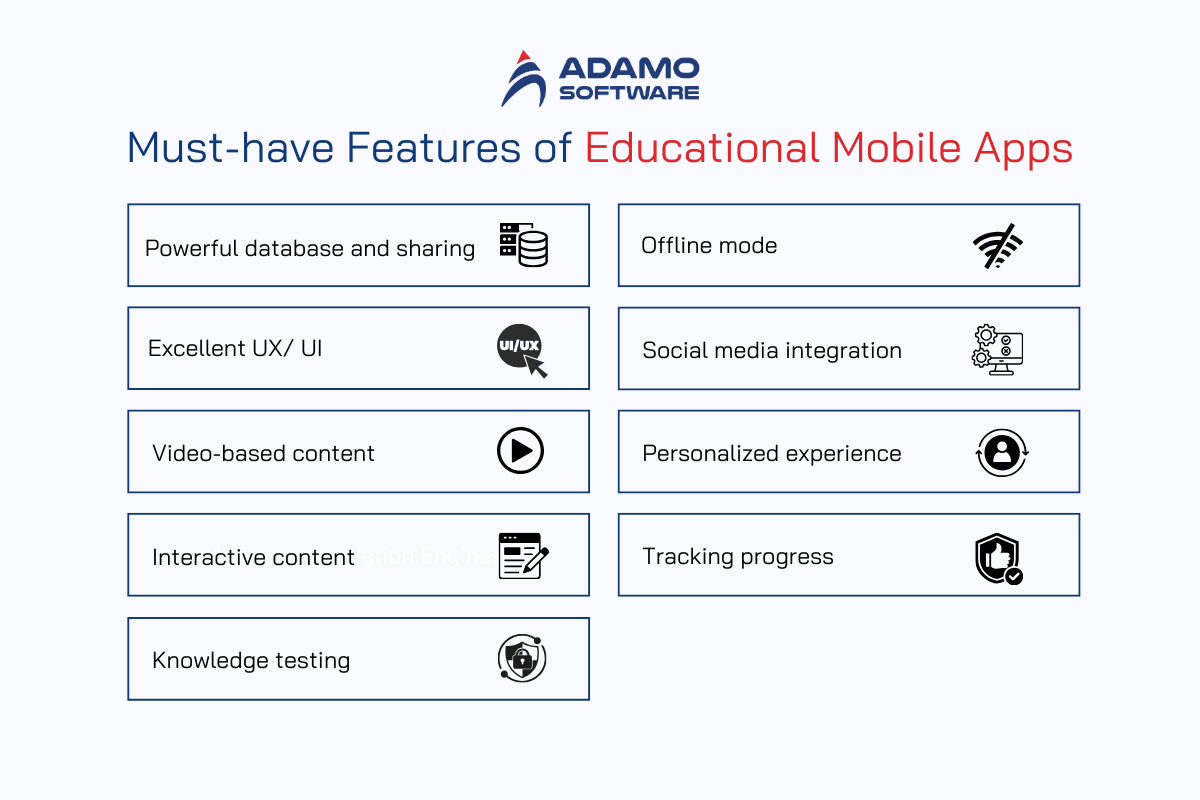
1. Powerful database and sharing
During your educational app development process, you must focus on the powerful database and sharing feature of the app so that your app can serve its intended purpose. Relevant information about specific genres and subjects must be updated regularly. The screen-sharing function facilitates convenient presentations while the recording function brings comfort to students and is helpful for students in exams and assessments. Additionally, smooth file sharing helps teachers and students coordinate and exchange information.
2. Excellent UX/ UI
Excellent UX/ UI is essential for an educational app. Attractive design, good functionality, and easy navigation are the basis for a successful app that can help you increase your competitiveness in a competitive environment. You must ensure that your app has a user-friendly interface and features to attract more users.
3. Video-based content
Your educational app development cannot lack the involvement of video-based content. This feature allows users to watch and listen to pre-recorded lectures or chapter-by-chapter lessons. With video content, users can use handy features such as zooming in on a specific image. It’s convenient to rewind/fast forward anything whenever they want.
4. Interactive content
Your educational app must have interactive content to increase app downloads. Here are the important factors you need to keep in mind.
- Your content must be mobile-friendly
- Your content must target specific audiences.
- The content should include interesting facts and interesting statistics to attract learner interest.
- The content must be easy to understand and worth reading
- The app must contain space for learners to leave their feedback
Overall, your educational app needs to have content that attracts users. Interactive content can significantly enhance the learning experience by engaging users, improving retention, and making learning more enjoyable.
5. Knowledge testing
Tests are integral to the learning process; therefore, you must consider adding simulation tests and quizzes based on different topics and subjects for learners to test their knowledge and level your educational app development. Incorporating knowledge testing features into the app can significantly improve learning effectiveness by helping learners assess their level of understanding, identify knowledge gaps, and encourage learners to participate in learning. Here are some types of knowledge testing.
- Quizzes and Assessments
- Practice tests and exams
- Surveys and polls
- Interactive exercises
- Flashcards
When developing the knowledge testing features for your app, don’t forget to design user-friendly interfaces for creating, taking, and reviewing tests. Besides, you may want to create flexible question formats and assessment types to cater to different learning needs. In addition, you must focus on the time limits and question randomization for each question.
6. Offline mode
Wifi and Internet connections are not always available; therefore, your app must provide an offline mode in which users can study and access downloaded modules and documents. This can maintain their interest in your app and create flavor conditions for users to search for information offline whenever they visit your app. Each module they download will give you clear insights into how practical the educational app is and how users react to each module. This further helps in course updates and app revisions.
7. Social media integration
With the social media integration feature, you can enhance user engagement, facilitate collaboration, and broaden the reach of your app. The social media platforms like Instagram, Facebook, LinkedIn, etc., add a positive element to motivate users to learn. By encouraging your users to share their learning process and test results, achievements, etc., on social media, you can promote active learning and enhance interactivity among users. Besides, users sharing information related to your app helps your app reach more people.
8. Personalized experience
Personalization plays a vital role in enhancing the user experience of your mobile app. For educational app development, the personalized experience feature includes options like simulated tests, feedback, error correction, and customized learning throughout the learning process.
If the application responds to the user’s learning style and method, their queries will be resolved immediately, which further helps improve user experience. In addition, with tailored learning paths and content, you can target individual strengths and weaknesses and address your users’ issues with learning. This results in improved understanding and effective information retention.
9. Tracking progress
Progress reports and tests should be part of the educational application. They help maintain interest and support enabling users to progress further. Thanks to the progress, users can stay focused on their learning objectives and achieve their goals efficiently. Besides, users can understand their strengths and areas for improvement better.
The users’ learning progress can be shown through charts, graphs, and progress bars. Besides the data on the number of lessons users have learned, these graphs can also provide detailed metrics on performance, such as scores, completion rates, and time spent on tasks. The tracking progress feature must allow users to view their progress over time, highlighting improvements and trends.
In addition to the above general features of educational apps, your app needs to have specific features for teachers and app users. For teachers, you should focus on the authorization, student monitoring, and notifications features. These features allow teachers to manage their students’ personal information, such as name, work title, course offered, etc. Besides, teachers can receive notifications on new courses, the number of users enrolled in their classes, etc. For students, besides the authorization and notification features like for teachers, your educational app must also have a dashboard for users, payment, and integration with social media features.
Also read: 9 Must-have Features of an Effective Educational Portal
IV. Modern Technologies for Educational App Development
Modern technologies such as AI, virtual reality, etc., are widely used in building apps, especially educational apps. Applying these technologies helps your app update the trends of the times with outstanding features that attract app users. Let Adamo Software recommend the three most popular modern technologies for your educational app development.
1. AI
Applying AI to your educational app development means that you will use AI technologies to create solutions and applications to improve the teaching and learning processes of teachers and learners. With the support of AI technology, your app will help improve the educational experience, personalize the teaching process, and facilitate educational management. In addition, AI is also used to analyze student learning data, provide immediate feedback, and create new educational resources based on information collected from students and teachers.
Besides, AI algorithms will analyze the user’s behavior and learning efficiency, thereby adjusting the personalized learning path and recommending learning content. Whereas, AI-powered chatbots can provide 24/7 support, answer questions, and offer personalized feedback.

2. Machine learning (ML)
Machine learning is also among the modern technologies you should consider for your educational app development. It is gradually creating change in education and innovating teaching, learning, and research methods. While teachers can take advantage of this technology to provide solutions that gradually create change in education and innovate teaching, learning, and research methods for students, researchers are using ML to discover new knowledge. In addition, ML also has many other benefits, such as driving research and discovery with large databases, improving school performance by personalizing curriculum, etc.
3. AR and VR
As mentioned, AR and VR technologies have become a trend for educational app development. Lessons and knowledge are simulated in 3D, becoming more detailed, intuitive, and memorable, attracting students’ attention. This creates a new learning platform, bringing much higher teaching efficiency than traditional methods. AR and VR create immersive learning environments like virtual labs, historical simulations, and interactive 3D models. Thanks to that, learning becomes more exciting and engaging.
In addition to the three technologies above, there are many other technologies you can use to develop your educational app. They are the cloud computing, data analytics, Blockchain, etc.
In general, the advancements in modern technologies have created more interactive, personalized, and effective learning experiences. Let’s apply them to have your app successfully developed.
V. How to Create an Educational App
For the success of your educational app development, you need to consider many factors to come up with the most complete app that is suitable for both teachers and learners. Below are some steps to create an educational app.

1. Generating ideas for educational app development
Like developing other apps, the first step in creating an educational app is generating ideas by identifying target users, and researching their needs and purposes when they use your app. Thanks to that, you can determine the purpose of making the app. Once you can determine the purpose and get to know your users, you can generate features you need to create for your app and the format to build your app on (web-based app or mobile-based app on iOS, Android, or both).
2. Designing your app
Now, it’s time to have your app designed. In this step, you will design a trial version of the app with the same interface as the actual version, with a focus on the user interface (UI), user experience (UX), and visual style of your app. You should use wireframes to map out the basic structure, build prototypes to test the flow and create a style guide to ensure the consistency of your app’s interface.
3. Developing and testing your app
When you have already had a polished UI/UX prototype of your app, you will come to the next stage: developing the app. In this step, you will bring your app to life using programming languages and coding. Besides, you can integrate outstanding features for your app here; for example, gamification, social learning, and assessment tools. Depending on the complexity of your app, you can have your educational app development team or outsource the process to coding experts.
Once you have finished building your app, you must test it thoroughly before putting it into use to ensure it is error-free and works as intended. This stage involves unit testing, integration testing, system testing, and quality testing. By going through these tests, you can ensure your app runs smoothly, is user-friendly, and ready to deliver a superior learning experience.
4. Deploying and publishing your app
This step requires you to know how to deploy your app to the app store or online market. It involves submitting your app to app stores, optimizing your app, and creating marketing campaigns to promote your app.
Overall, your educational app development process requires planning, designing, developing carefully, and continuous improvement. A complete app can help you make money. But how to monetize your app? Keep reading for your answer.
VI. Educational Application Development: How to Monetize Your App
Thanks to the profits earned from the app, it is worth having an educational application development. Like other apps, there are many ways for you to monetize your educational app. Here are some of the methods.
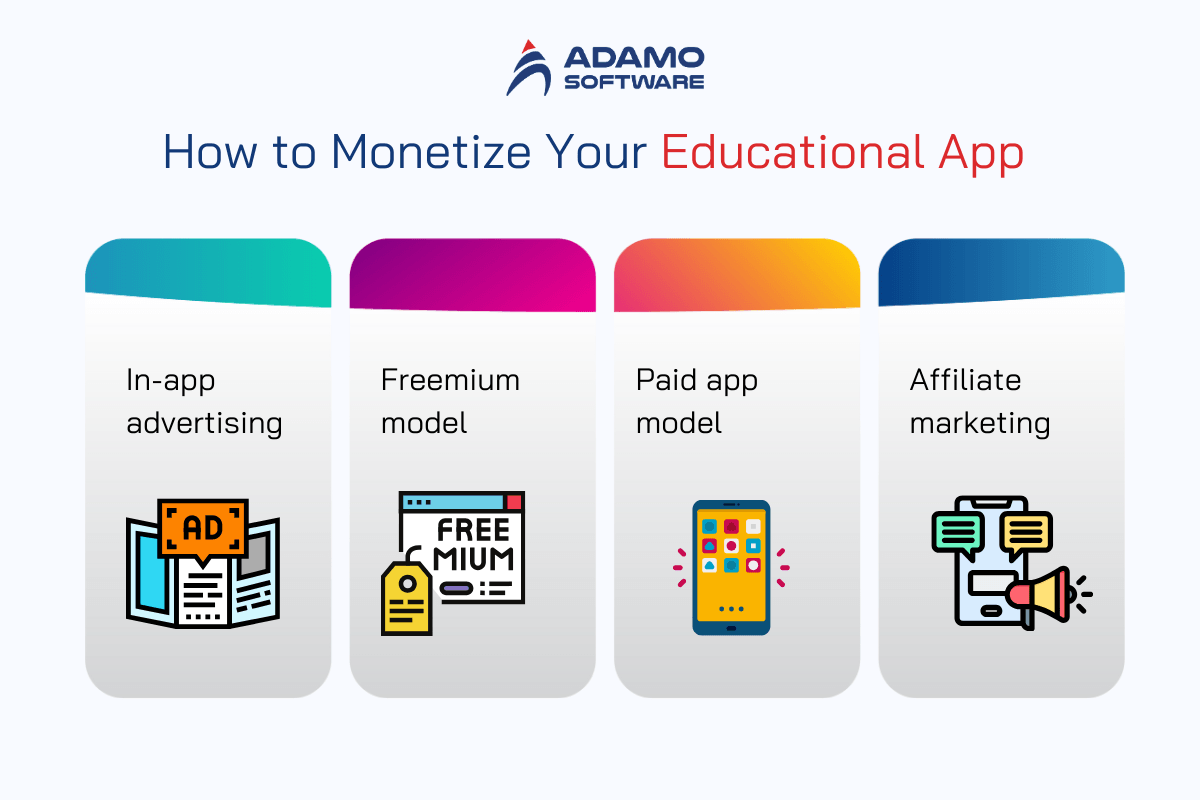
1. In-app advertising
One of the most common ways to earn money from your app is through in-app advertising where you can display paid ads within your app. Depending on your goals, you can choose different advertising formats, such as banner, video, multimedia, native ads, etc.
2. Freemium model
With this model, you can provide users with basic features and basic lessons of the app while charging for premium features. When customers spend money to buy the premium version, they can access more advanced analytics, content, and more features, such as talking directly with native speakers instead of learning via video for foreign learning apps.
3. Paid app model
Instead of a free download, you can charge users a one-time fee to download and use your educational app. When customers pay this fee, they will have access to all features in the app without having to pay any additional money. To make money this way, you need to offer competitive prices that reflect the value of your app and market standards. You need to highlight the value that the app brings to users, and the competitive advantages compared to other apps so that customers will be willing to spend money to buy your app.
4. Affiliate marketing
Affiliate marketing is another way to monetize your educational app. You can refer to the third-party products or services within your app and earn commissions from them. One thing to note is that these products and services must be related to the educational field. You can partner with companies that offer products or services relevant to your user base, or integrate affiliate links to educational products and software. This can be your additional revenue stream.
Overall, you can monetize your app in many ways; however, they need to be associated with your target audience, the value you provide, and your overall business goals. Let’s create your app and figure out how to monetize it.
VII. How Adamo Help You with Successful Educational App Development
As one of Vietnam’s leading app development companies, Adamo provides full-cycle services in software development, mobile and web-based solutions, AI development, and Blockchain. Partnering with us, you can completely trust the effectiveness we commit to. As our team includes professional developers, designers, and project managers, we will closely work with you to help you with your educational app development.

Our team has extensive experience in researching the market for customers working in different fields, and the education sector is one of them. We are all proficient in using modern technologies such as AI, ML, AR, VR, and cloud computing, which can enhance your educational app’s functionality and interactivity.
From initial concept and planning to designing, developing, testing, and launching, we optimize every process and provide suitable solutions so that your app can target the right users, and meet your users’ requirements and needs. Even when your educational app development has already finished, we are still here to provide ongoing support to ensure that your app runs smoothly and successfully.
Are you ready to have your educational app launched? Contact us now for your end-to-end app development solutions.




